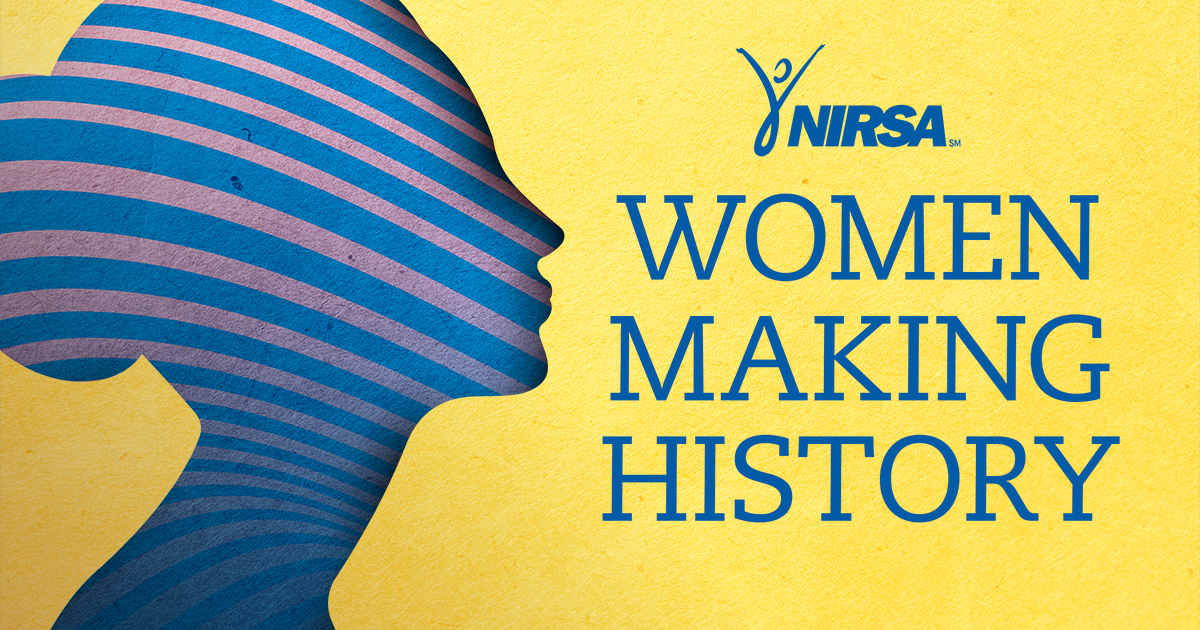In a time when many considered a woman’s most notable college achievement was to earn her MRS. title, three women stepped up to help create the association we now know as NIRSA.
In the beginning…
In February of 1950, 20 individuals from 11 campuses came to Dillard University for a working conference on intramural sports. This first conference consisted of meetings, roundtables, and intramural competitions—including boxing, tennis, basketball, touch football, and best physique.
Of the 20 attendees at this conference, three were women: Dr. Juanita Pierce, Dimples Lee, and Annette Akins.

At this conference, the attendees selected the name National Intramural Association and appointed executive officers, which included Annette Akins as vice president and Dimples Lee as secretary. During this time most women working in the field were typically hired into teaching, nursing, and secretarial positions. Annette Akins’ and Dimples Lee’s positions on the executive board were major appointments that opened the door for the NIA to allow women to serve in multiple leadership positions within the organization.
As the organization and the importance of intramural sports continued to grow, the Association saw fit to amend how it was structured and created men’s and women’s divisions; according to Challenge and Change: A History of the Development of NIRSA 1950-1976, the women’s division was led by Dr. Cereta Perry.
During the 1957 conference at Brown University, the Association started to discuss the concept of co-recreational sports. This conversation took place as a second wave in the feminist movement and was largely overshadowed by the broader issue of equality between men and women.
A shift towards exclusivity
Unfortunately, Association leaders of the time did not support equality between men and women, perhaps due to the perceived lack of strong female involvement in the Association.
In an interview that was first published in the Recreational Sports Journal in 1987, Dr. Ross Townes, a founding NIA member, says, “There was an undercurrent at that particular time—and I don’t recall it being a formal fight or anything at that time. All I know is that they [women] just weren’t present.” Dr. Townes shares that he perceived a lack of participation as a reason for the decision to remove women from the association. He says the NIA was “really catering to Blacks, and there weren’t that many Black women involved in intramurals.”
By the time the Women’s Rights Movement was at full strength in society, the membership status of women in the NIA had been revoked. While this time could have been an opportunity for the NIA to show its support of women’s equality, the Association moved in a different direction. Intermittent discussions about reinstating women’s membership continued throughout this period, but they weren’t promising.
Embra Bowie, an active member from the early years says in the NIRSA – A Living History interview series, “I think a lot of the members didn’t see any need for women. I remember when the issue came up a lot of the members said that if women became members they were going to resign.”
Although this may seem disheartening, we all know that the future of NIRSA included women heavily involved in leadership roles. While women were not working directly within the Association structure, they still had allies and ties that would foster their journey back into the Association. Women would go on to serve the Association in impactful ways far beyond what I’m sure those past members could have imagined.
Making history
Leadership does not always mean being up front and center. At times it can be the supporting roles that make a significant impact that cannot be ignored.
We hope you’ll follow the journey of women in NIRSA over the coming weeks—a journey that opened the way for future NIRSA leaders like Pam Watts, NIRSA Executive Director, Victoria Lopez-Herrera, NIRSA At Large Director and Senior Associate Director for Campus Recreation at the University of Texas at San Antonio, and Wendy Windsor, NIRSA President Elect and Director of Campus Recreation at Tulane University.
Katherine "Katie" Geter is currently Coordinator of Rec Sports & Family Programs for University of Houston’s Campus Recreation; you can email her at kgeter@central.uh.edu.
Becky Todd is currently the Associate Director for Programs at the University of Arkansas as well as the 2018 Annual Conference Program Chair.







